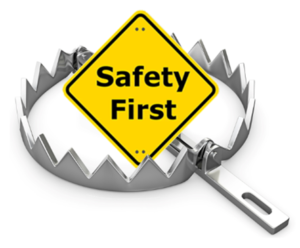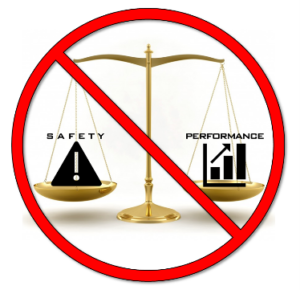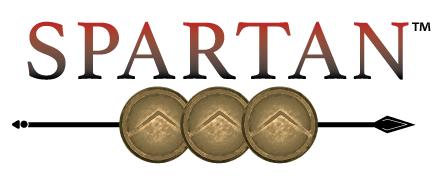HOPping from Safety to Performance
by Michael Peterson and Tim Reynolds, April 5, 2021
 In a recent episode of Todd Conklin’s Pre-Accident Investigations Podcast1, a listener questioned the “religious fervor” of pithy safety mottos, soundbites, and catch phrases that are often “raised on pedestals of worship” typically to the exclusion of larger more complex concepts. He asked, “How can we avoid the safety-as-a-religion trap?” Conklin mused (in his usual Socratic way) that the bigger subtext was “How we’re looking for simple answers to very complex problems – simple answers to manage a highly complex work environment and uncertainty.” He advised that organizations seeking to implement Human & Organizational Performance (HOP) “take that program and build on it in a direction that moves more towards a larger systemic understanding of what’s going on. …Why not make safety something that is operationally available – a capacity.”
In a recent episode of Todd Conklin’s Pre-Accident Investigations Podcast1, a listener questioned the “religious fervor” of pithy safety mottos, soundbites, and catch phrases that are often “raised on pedestals of worship” typically to the exclusion of larger more complex concepts. He asked, “How can we avoid the safety-as-a-religion trap?” Conklin mused (in his usual Socratic way) that the bigger subtext was “How we’re looking for simple answers to very complex problems – simple answers to manage a highly complex work environment and uncertainty.” He advised that organizations seeking to implement Human & Organizational Performance (HOP) “take that program and build on it in a direction that moves more towards a larger systemic understanding of what’s going on. …Why not make safety something that is operationally available – a capacity.”
There’s a lot going on is his response: A reluctance to simplify in order to manage complex work and uncertainty2 and leveraging a systemic focus to build adaptive capacity. But to what end…being safe?

Everyone that comes to embrace benefits of a HOP culture travels a unique path – their own, unique journey.
Several advocates, like Dr. Conklin, Tony Muschara, and others, made their journey from a nuclear power perspective that was informed by the US Navy’s Pillars of Nuclear Propulsion3 and high-profile industry events (Three Mile Island – 1979, Chernobyl – 1986, and Fukushima – 2011). Others, like Sydney Dekker and David Woods, bring perspectives from their unique industries (i.e., commercial aviation and Crew Resource Management skills, NASA and resilience engineering). My journey, like many HOP practitioners, comes from the perspective of a High Reliability Organization (HRO) as defined by Karlene Roberts and her colleagues through their studies of successful United States Navy aircraft carrier operations in dynamic, complex, high-threat environments4. Members of the military, law enforcement, emergency response, and other HROs have used elements of HOP for years to optimize teams, connect and align organizations, engage and empower frontline workers, and build adaptive capacity and resilience, but our primary objective was never safety – this was not our religion.
The formational dogmas of HOP (i.e., the original INPO/US DoE Principles of Human Performance5, Conklin’s 5 Principles of Human Performance6, and those adapted by other practitioners and major corporations) often morph into “safety mantras” intended to take a sledgehammer to legacy worker-focused paradigms of Behavioral Based Safety and Taylorism that HOP seeks to replace.

These pithy artifacts are an attempt to get organizations to act their way into the espoused values and, eventually, deep beliefs and assumptions identified by Edgar Schein7 that comprise and drive organizational culture and are the essence of HOP – how people think about and perform work. They were a necessary first step to displace legacy views and attitudes so they could be replaced with resilient HOP principles that are more effective in addressing modern challenges: complex, highly-connected, multi-path systems; increasingly dynamic environments; requirement for group action; and unexpected events today.
But what’s the next step in the HOP journey – How do practitioners and aspiring organizations avoid or move beyond the safety-as-a-religion trap? The answer lies in the name – Human & Organizational Performance (it’s not called Human & Organizational Safety, after all).
Too often, HOP is viewed and practiced as a safety-centric program. Who are today’s HOP champions in most organizations? They are usually HSE professionals. Where do you go to hear a HOP keynote or read the latest articles? You attend an acronym agency-sponsored safety conference or browse the latest safety journal. What do leading HOP advocates name their concepts? “New View Safety” or “Safety Differently” (Dekker), “Safety II” (Hollnagel)…. HOP practitioners correctly advocate for measuring success not by the absence of negatives, but by the presence of capacity. But this capacity is often intended to achieve a safe outcome without explicit emphasis on the quality of other critical aspects of performance.
 As a HOP practitioner from the HRO school, I was amazed by the false performance paradigm present in many organizations and industries. There remains a belief that safety and other aspects of performance (i.e. efficiency, quality, profitability, etc.) are in opposition. Some organizations mistakenly believe there is a binary choice – That safety and performance are somehow related in a way that to gain one you had to sacrifice the other. In an HRO, you cannot eliminate all risk by definition, but error in HROs tend toward the catastrophic. High-performing HROs effectively manage and mitigate hazards while performing their mission effectively and safely. In, firefighting, emergency medicine, space exploration, and other HROs, the mission has primacy and safety is, in Schein’s parlance, an assumption – a belief held so deeply, it is assumed to be true and is embraced by everyone in the organization.
As a HOP practitioner from the HRO school, I was amazed by the false performance paradigm present in many organizations and industries. There remains a belief that safety and other aspects of performance (i.e. efficiency, quality, profitability, etc.) are in opposition. Some organizations mistakenly believe there is a binary choice – That safety and performance are somehow related in a way that to gain one you had to sacrifice the other. In an HRO, you cannot eliminate all risk by definition, but error in HROs tend toward the catastrophic. High-performing HROs effectively manage and mitigate hazards while performing their mission effectively and safely. In, firefighting, emergency medicine, space exploration, and other HROs, the mission has primacy and safety is, in Schein’s parlance, an assumption – a belief held so deeply, it is assumed to be true and is embraced by everyone in the organization.
HOP principles, tools, and techniques offer a means to build adaptive capacity to address dynamic, hostile environments, complexity, and unexpected events while operating reliably. During normal operations they act as a catalyst for learning, innovation, continuous improvement, and a positive work experience and culture that lead to a competitive advantage. When faced with adversity, HROs inevitably find a way to accomplish the mission, using HOP principles and supporting tools, and fail gracefully when mission accomplishment is no longer possible. Reliable operations can be so much more than safe, they should be efficient, predictable, repeatable, quality-controlled, and resilient. HOP offers an opportunity to optimize both safety and performance – if properly implemented, there is no trade off required in safety and performance.
Dekker called Safety Differently “Safety without the performance drag.” Maybe the next evolution in HOP is to realize its potential to produce “Performance without the safety drag” – where safety becomes an assumption and mission excellence becomes the primary focus.
Maybe we need to move beyond pithy principles designed as a prophylaxis against an anti-HOP culture to evolved HOP principles that address the complexity of the larger system and point toward the desired culture as a reflection of positive capacity.

Conklin is right – We should avoid looking for simple answers to complex problems. HOP principles and supporting tools, processes, and leadership employed within the framework of the principles allow organizations to effectively manage a highly complex work environment and uncertainty. We need a larger systemic understanding of what’s going on. But HOP is so much more than a safety discipline.
HOP is Organizational…its scope and impact reach far beyond HSE pursuits to penetrate and improve the work experience for everyone – operators, frontline supervisors, site managers, office staff, planners, and executives. Maybe we need a little more Erik Hollnagel in our HOP to avoid the safety-as-a-religion trap – “But if [operations] go well, it also increases productivity and efficiency, and, maybe, quality and a lot of other things so your investment is not an investment to prevent something from going wrong, it is an investment in the functioning of the system of the organization.”
HOP ultimately should be about mission performance; the primary function of the system of the organization- Mission First, Safety Always.
References:
1 – Conklin, Todd, “The 2021 Question Episode”, Pre-Accident Investigations Podcast, PAPod 328, February 27, 2021.
2 – Weick, Karl E., and Sutcliffe, Kathleen M., Managing the Unexpected: Resilient Performance in an Age of Uncertainty, 3rd ed., John Wiley & Sons, 2015.
3 – United States Navy Nuclear Propulsion Pillars (influenced by ADM Hyman Rickover, USN): Integrity, Procedural Compliance, Level of Knowledge, Formality, Questioning Attitude, Forceful Backup, and Communication
4 – La Porte, Todd R., Roberts, Karlene, and Rochlin, Gene I., Aircraft Carrier Operations at Sea: The Challenges of High Reliability Performance, Final Report, High Reliability Organization Project, University of California, Berkeley, 1988.
5- Institute of Nuclear Power Operations (INPO), Human Performance Reference Manual, INPO 06-003, 2006. / US Dept. of Energy, Human Performance Handbook Vol 1, DOE-HDBK-1028-2009, 2009.
6 – Conklin, Todd, The 5 Principles of Human Performance, Pre-Accident Investigation Media, Santa Fe, New Mexico, 2019.
7 – Schein, Edgar H., “Coming to a New Awareness of Organizational Culture”,Sloan Management Review 25:2 (1984 : Winter).
About the Authors:
Michael “Tung” Peterson is a Navy Fighter Weapons School (i.e., TOPGUN) graduate and former Strike Fighter Weapon and Tactics School Instructor in the F-14 Tomcat and F/A-18F Super Hornet. He is a former Assistant Professor of Military & Strategic Studies at the United States Air Force Academy who holds an MA in Security Studies from the Naval Postgraduate School and a BS from the US Naval Academy. He is a founding member of SPARTAN Training & Performance, an avid outdoorsman, and vocal advocate for individuals with intellectual and developmental disabilities. He resides in Colorado with his wife and three daughters.
Tim “Hoolie” Reynolds is a former EMT and 25-year US Navy veteran where he commanded a an electronic attack squadron and was a Command Center Director at NORAD/US Northern Command, charged with Defense Support of Civil Authorities and the military defense of the US homeland. He is a founding member of SPARTAN Training & Performance, a HOP-focused consultancy. He is a certified Aviation Safety Officer who holds an MA in Strategic Studies from the Naval War College and a BA from the University of California, Berkeley. Tim and his wife live in Colorado with two children in college and two more at home. They enjoy hiking, skiing, travelling, and spending time with family and friends.


